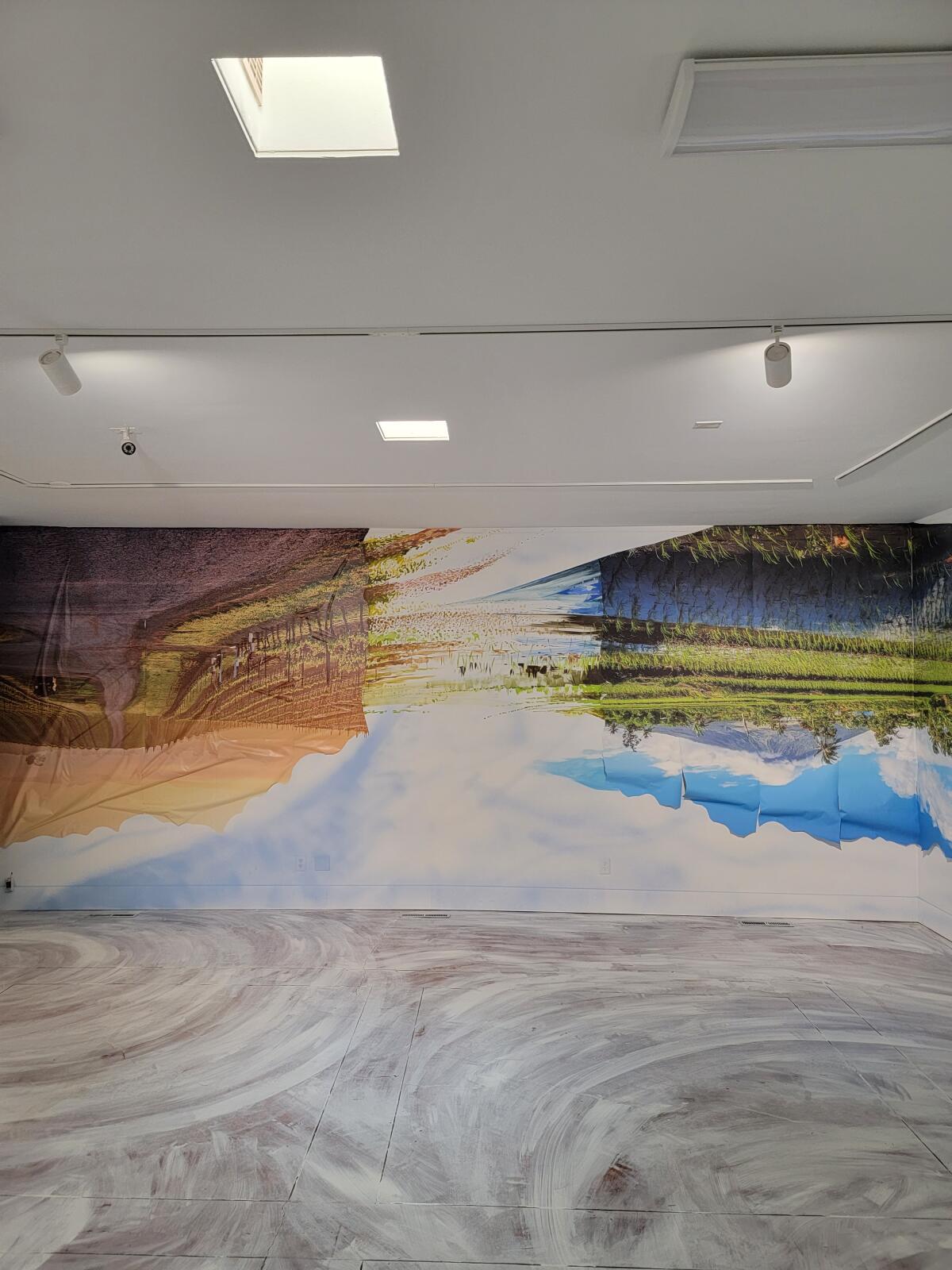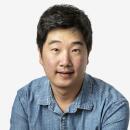Essential California: The landing of the first Asians in California

- Share via
Good morning, and welcome to the Essential California newsletter. It’s Tuesday, July 5. I’m Jeong Park, a reporter covering Asian American communities.
An important piece of Asian American history is commemorated in a parking lot by Morro Rock, across from the iconic three smokestacks of the Morro Bay Power Plant.
Here, a plaque on a rock marks the first landing of Filipinos — and Asians — in what we now call the continental United States of America.
Although the exact location of the landing is in dispute, historians and community members have marked Oct. 18, 1587 as the date when a Spanish galleon with Filipino crewmembers arrived in the area.
Pedro de Unamuno, a Spanish captain, dispatched Filipino scouts and Spanish crewmembers to put up a cross atop a hill to mark possession of the area. Two days later, Chumash Native Americans attacked the crew, killing a Filipino and a Spanish crewmember. The ship moved on, and Spain didn’t colonize California until the late 1700s.
The plaque, dedicated in 1995, laid the groundwork for Congress in 2009 designating October as Filipino American History Month.
And this year, an art exhibit at the San Luis Obispo Museum of Art seeks to dissect how we remember the Morro Bay landing and what it means not just for the Filipino Americans, but also for the Native Californians.
The exhibit, “See and Missed,” is an immersive experience filled with upside-down images of farmland in the Central Coast and the Philippines, blending and colliding with each other. Brown, blue and green islands dot the floor of foamy ocean waves.
The exhibit also has several paintings, marked by the collision of objects such as nurses’ gowns, piña cloth and nature calendars.
The exhibit felt a bit disorienting to me when I visited late Sunday afternoon. That was by design, said Camille Hoffman, the 35-year-old Filipino American artist based in New York who created it.
A Filipino American identity “is very tied to moving across water and across many lands but never fully situated in one place,” Hoffman told me. “Creating a space where one can’t fully identify with one or the other was really important to me.”
It wasn’t until last summer, when Hoffman visited the Central Coast to prepare for the exhibit, that she learned of the Morro Bay landing, launching what she called “a learning experience,” where she talked with numerous experts and community leaders, including a Chumash leader.
For Hoffman, the exhibit is not a celebration but a questioning and conversation on the complicated ways we can look at the legacy of the Morro Bay landing.
“It is a conversation to acknowledge that this Morro Bay landing was a violent attempt to claim the land that isn’t theirs,” said Emma Saperstein, the chief curator at the museum. “The exhibit is a chance to use the space to hold those conversations.”
In a lecture last year, a USC professor Adrian De Leon argued that the commemoration of the landing as a celebration allows California and the United States to “glide over” the history of violence against Native Americans.
“Morro Bay serves as the Asian Americanism of the pilgrim narrative rooted in a recuperative narrative of arrival versus exploited colonial labor,” De Leon said in the lecture. “Historization of our community must not begin with narratives of the first arrival ... but rather a shared catastrophe and the future of shared liberation.”
After all, Filipinos were not necessarily willing participants, as they were conquered by Spain in the 16th century. Spanish colonial rule over the Philippines lasted until 1898, when the U.S. took over the country after its victory in the Spanish-American War.
Nurses’ gowns strewn throughout the exhibit are a reminder of how the United States’ rule has impacted the lives of so many Filipinos, Hoffman said. In the early and mid-20th century, the U.S. set up nursing schools throughout the Philippines. Many trained in the schools eventually left for economic opportunities in the U.S., where they faced systemic exploitation and discrimination. Recent studies, for instance, have found that Filipino American nurses have died of COVID-19 at a disproportionate rate.
“Our communities have certainly both been radically impacted [by the legacy of colonialism] ... and it has had different kinds of consequences for each of us,” Hoffman said.
Hoffman hopes the exhibit will be a space where people can ponder the complicated nature of the Morro Bay landing and the violence of colonialism.
“So much has been purposely omitted from the history books or just has been lost through the violence of colonial history and through time,” Hoffman said. “How do we fill in the blanks?”
The exhibit will be open to the public until August 21.
And now, here’s what’s happening across California:
Note: Some of the sites we link to may limit the number of stories you can access without subscribing.
Two-thirds of California counties are in the high COVID-19 community level. In those counties, the U.S. Centers for Disease Control and Prevention recommends universal masking in indoor public spaces. Ventura County is the first Southern California county to enter the level. L.A. Times
O.C.’s Vietnamese homeless people. In a culture anchored by family ties, career achievement and a strong work ethic, they are outliers — jobless, often estranged from loved ones, reduced to begging for dollars or banh mi sandwiches. The shame can deepen their isolation. L.A. Times
A ‘vortex’ of economic troubles in the Bay Area. Pandemic-related supply chain issues. Inflation. Stock market plunge. You might escape one problem, but there’s another one around the corner. Mercury News
Disappearing ‘gayborhoods.’ Soaring rents mean LGBTQ residents and activists are fleeing the very same communities they’ve built, including West Hollywood and San Francisco’s Castro district. New York Times
L.A. STORIES
USC and UCLA are going to the Big Ten. Here’s everything you need to know. Can’t wait for UCLA to play a November game in 30-degree snowy weather in West Lafayette, Ind. Indiana. Yay! L.A. Times
Will Target gift cards help people break their addiction to meth? A program in L.A. is trying it. L.A. Times
Can Rep. Karen Bass win over the new left? Gina Viola, who ran on defunding Los Angeles police, among other platforms, got nearly 7% of the vote in the primary. L.A. Times
Our daily news podcast
If you’re a fan of this newsletter, you’ll love our daily podcast “The Times,” hosted every weekday by columnist Gustavo Arellano, along with reporters from across our newsroom. Go beyond the headlines. Download and listen on our App, subscribe on Apple Podcasts and follow on Spotify.
POLITICS AND GOVERNMENT
Gov. Gavin Newsom launches ad in... Florida? In the ad, Newsom contrasts policies in California and Florida while images flash of former President Trump and Gov. Ron DeSantis, potential 2024 presidential candidates. L.A. Times
Editorial: America, still independent, still free, still in jeopardy. The Los Angeles Times’ editorial board reflects on what this year’s Fourth of July means for the country. L.A. Times
How a Rocklin teacher was punished for showing students the news. A CNN video on a California law that would have required public school students to be vaccinated against COVID led to acts of harassment against Katie Ragan, a Granite Oaks Middle School teacher. Ragan’s district failed to protect her, she said. Sacramento Bee
CRIME, COURTS AND POLICING
How Metro wants to make you feel safe. The agency will place up to 300 uniformed workers on trains and buses starting this fall. Those workers will alert police to threats, point people to homeless-service agencies and keep an eye on vulnerable people. L.A. Times
Another mass shooting in downtown Sacramento. Five people were shot, one of whom was killed, early Monday, police say — the second mass shooting in the city’s core in three months. Sacramento Bee
A pardon for a woman who killed her trafficker. Gov. Gavin Newsom on Friday pardoned Sara Kruzan, whose murder conviction at the age of 17 sentenced her to life in prison. Her case became a symbol of a flawed justice system. L.A. Times
Support our journalism
HEALTH AND THE ENVIRONMENT
Another Superfund site? California is formally asking the federal government to add the heavily polluted former site of Exide Technologies in Vernon to the Superfund list to make it eligible for millions of dollars in additional clean-up funds. The state has already committed $700 million. San Gabriel Valley Tribune
Environmental concerns lead North Lake Tahoe to host a drone show for the Fourth of July instead of fireworks. The question over fireworks concerned what kind of event aligns with the long-term well-being of Tahoe’s communities. San Francisco Chronicle
Share of renewable energy sources grows in California. Still, natural gas makes up about half of California’s total in-state electricity generation, according to data from the California Energy Commission released in April. San Francisco Chronicle
CALIFORNIA CULTURE
Anime Expo is back! Tens of thousands flocked to the Los Angeles Convention Center over the weekend to attend what is deemed the “largest celebration of Japanese pop culture in North America.” It was the first in-person convention since the pandemic began in 2020. What was talked about? How about a Cyberpunk anime? A new Pac-Man World game? Oh, and the fact that the organizers are planning another event in Ontario on Nov. 12 and Nov. 13. L.A. Times
What else is back? 626 Night Market! Santa Anita Park in Arcadia hosted its first 626 Night Market for the year over the weekend. After going there for years, I’ve found the environment a bit too crowded and overpriced. But it seems like this year’s event is sporting some interesting food (Rainbow mozzarella unicorn dog?!). Another night market is planned for the upcoming weekend. CBS L.A.
One way to decompress: backyard archery. Getting back from a long weekend is tough. So, how about finding some bows and arrows and going off between Zoom meetings? L.A. Times
The Cesar E. Chavez National Monument could become a national park. U.S. Sen. Alex Padilla and Rep. Raul Ruiz introduced a bill in June which would create a park with multiple locations in two states. Bakersfield Californian
Free online games
Get our free daily crossword puzzle, sudoku, word search and arcade games in our new game center at latimes.com/games.
CALIFORNIA ALMANAC
Los Angeles: Partly cloudy, 78. San Diego: Mostly sunny, 71. San Francisco: Partly cloudy, 68. San Jose: Partly cloudy, 79. Fresno: Sunny, 92. Sacramento: Mostly sunny, 84.
AND FINALLY
Today’s California memory is from Eleanor Fink:
We were volunteers for a Sonoma County 1989 wine competition, assigned to the level of home winemakers, many of them amateurs working out of garages and home kitchens, proudly bottling their own ‘vintages.’ We washed glassware, set them out on trays, made sure each judge — there were more than a dozen — had the appropriate number of clean glasses and sufficient wine in each of the blind-labelled and numbered bottles for tasting and comparison. As the judges checked off their tabulations — color, acid, clarity, etc. — we looked over their shoulders to see how they were ranking the wines entered in the competition. One judge noted mystifyingly, after sniffing, swirling and tasting: DPIM. It turned out to be his own shorthand for Don’t Put In Mouth.
If you have a memory or story about the Golden State, share it with us. (Please keep your story to 100 words.)
Please let us know what we can do to make this newsletter more useful to you. Send comments to essentialcalifornia@latimes.com.
Sign up for Essential California
The most important California stories and recommendations in your inbox every morning.
You may occasionally receive promotional content from the Los Angeles Times.







